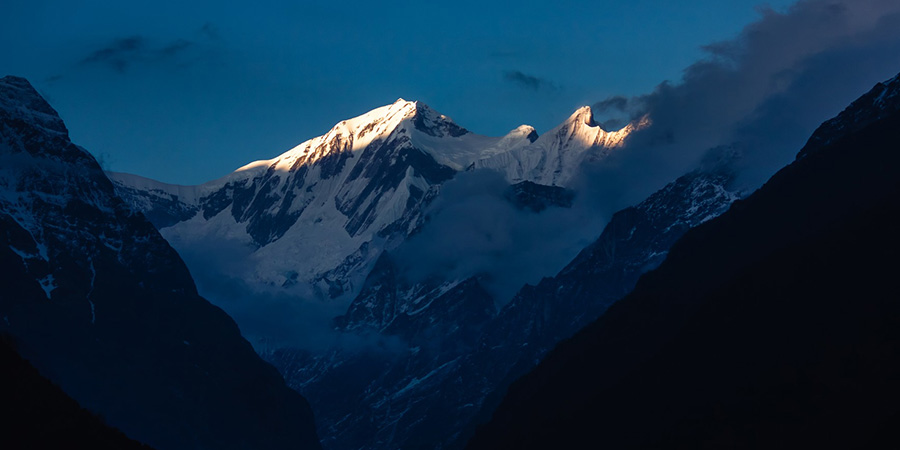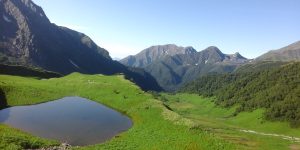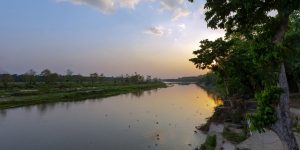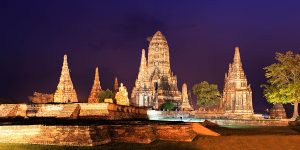It was in 1996, after Jimmy Roberts first introduced a map of the trail, that trekking to Annapurna Base Camp (ABC) gained popularity. The trekking route has opened up new opportunities and experiences for locals and had dynamic social and economic spillovers.
SANITATION
A traditional doko being used as a dustbin in a guesthouse along the ABC route
Starting from Nayapul (1010m), there are teashops and guesthouses at an interval of every two hours. The managers have managed to hold fast to the most essential factor determining the inflow of tourists—sanitation. “The Nepalese tea houses are a lesson in tourism management”, says Priti David, a travel blogger, talking about her ABC experience. Bed sheets are machine rinsed and toilets are washed every day. “Our business runs on reviews which is why we don’t compromise on sanitation” claims the owner of Bamboo Guest House. Along with catering to the needs of the tourists, it is evident that the locals are starting to inculcate the same habits in their everyday life. The spillover effect has brought about massive improvements in their health and living conditions. In 2011, Kaski district (where ABC lies) became the country’s first open-defecation-free district.
EDUCATION
A guesthouse owner proudly displays photos of his son who went to London for his higher studies
At Jhinu Hot Spring Guest House, I observe a young boy, probably in his teens, deal with the tantrums of tourists as well as help his mother handle accounts for the day. He wears the jersey of a regional Volleyball team. On being asked, he reveals that he is studying in a Boarding school in Pokhara and is home (Jhinu, 1780m) for the Dashain Break. Likewise, a teahouse owner at Sinuwa, flaunts photographs of his son in the dining area. “We sent him to London for his higher studies”, says the proud owner. Nearly every guest house located under the Himalayan stretch had an impressive story to tell. Tourism in the region has broadened perspectives of the people and raised awareness on the importance of education. Literacy rate of Kaski district stood at 96.3% in the year 2015, one of the highest in the country.
LANGUAGE AND CONNECTIVITY
A signboard depicting the start of the high altitude portion of the trek; all major signboards along the trek route are in English
Ethic groups such as Gurung and Magar dominate the southern region of the Annapurna Conservation Area whereas Thakali, Manange and Lobe are predominant in the North. Traditionally, each of these groups would speak their own dialect. However, with the large influx of tourists, English and Korean languages have occupied a special place in the region. Information and hoarding boards starting from Chommrong (2170m) are written in both English and Korean. Locals are now able to connect with the tourists and communicate easily with them. Even though there is no mobile network available from Bamboo (2310m) to ABC (4130m), all the guesthouses are facilitated with Wi-Fi connections to attract the tourists. This has strengthened connectivity in the remote areas. Locals are now starting to follow the news and have political discussions over hot cups of tea.
ENVIRONMENT
Pristine natural scenes along the trek route
Realizing the potential of eco-tourism, in 1986, the Government of Nepal launched the Annapurna Conservation Area Project (ACAP)—the first and largest Conservation Area in the country. According to an ACAP report, one trekker generates an average of a kg of non-biodegradable waste during their trek.
In addition, fuel consumption by visitors is double than that of locals. The deteriorating use of natural resources has raised concern over the negative spillovers of tourism in the Annapurna Circuit. Despite the impressive work done by the local community in keeping their environment clean, the condition is expected to worsen if no substantial method of waste disposal is introduced.
Spillover effects of tourism have both positively and negatively affected the Annapurna Circuit. There is a need to realize the positive and work towards minimizing the negative spillover effects. This way, tourism can continue to bring about positive social, economic and environmental changes and positively transform the lives of locals.







